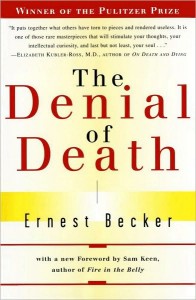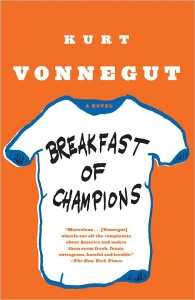It’s summer and you’d rather be at the beach than looking out the window. 
Here’s help from Robert W. Bly, an author you maybe familiar with. Bly has written over 75 books, and is known as “America’s top copywriter.” He share some of his productivity tricks in “Make Every Second Count: Time Management Tips and Techniques for More Success with Less Stress.”
Are you ready to move beyond to-do lists, and banish your bad habits?
Here are a few of the suggestions in Bly’s book that can help almost any writer. They stem from his ten percent solution …
1. Add 10% more productive hours to your day. Find your time wasters and put those non-essential tasks aside. Work another half-hour instead.
2. Get 10% more energy. This won’t work every day, but sometimes all we need is a walk around the block, or a few invigorating exercises to keep going another hour at the task at hand.
3. Think 10% faster. I like this one, because I’m often a lazy-brain when I get overwhelmed with researching an article or editing a manuscript. Bly says we can get something solved faster with sharper thinking. Here is a paraphrased example: Identify the problem, assemble pertinent facts, gather general knowledge, look for combinations, use checklists, get feedback, team up with others, etc. In other words, don’t stay stuck. Get moving on the problem and spark a solution.
4. Make your brain think 10% faster. Did you know that “brain decay” begins around age 35 and accelerates dramatically when you reach age 50? The solution involves steps you can do daily: focus on good nutrition, physical and mental exercise to keep the wheels turning and keep your brain sharp.
5. Speed up your reading by 10% or more. Writers read all day long, and we can get bogged down reading online, clicking from one thing to another in today’s information explosion. Bly suggests you figure out what matters to you now; focus on that, and make notes to refer back to other ideas. For things that matter less, such as magazine articles, try to read faster. A 10% improvement today, says Bly, will multiply the value in your life many times over.
BIO: Helen Gallagher shares her advice and ideas on small business and technology at Freelance-Zone.com. Her books and blogs are accessible through www.releaseyourwriting.com. She is a member of ASJA, Small Publishers Artists & Writers Network, and several great Chicago-area writing groups.

 In a study published in the journal Psychotherapy and Psychosomatics in 2008, University of Georgia researchers found that inactive folks who normally complained of fatigue could increase energy by 20% while decreasing fatigue by as much as 65% by simply participating in regular, low-intensity exercise.
In a study published in the journal Psychotherapy and Psychosomatics in 2008, University of Georgia researchers found that inactive folks who normally complained of fatigue could increase energy by 20% while decreasing fatigue by as much as 65% by simply participating in regular, low-intensity exercise. Denial of Death, by Ernest Becker. Written with “man” meaning “human,” and using masculine pronouns throughout, this book might appear unreservedly patriarchal and oppressive even if it wasn’t a discussion of the inevitability of death. But for writers, it’s a useful exploration of the existential dilemma and it offers an essential justification for going through life as an artist. It’s not easy reading, and it shouldn’t be read all at once, especially in seasons when the days are getting shorter. Still, I read through it every three years or so, just to see how much I’ve changed, and to see if I can find yet one more passage that will help me be a better and happier writer. Hint: the happy chapters are at the end.
Denial of Death, by Ernest Becker. Written with “man” meaning “human,” and using masculine pronouns throughout, this book might appear unreservedly patriarchal and oppressive even if it wasn’t a discussion of the inevitability of death. But for writers, it’s a useful exploration of the existential dilemma and it offers an essential justification for going through life as an artist. It’s not easy reading, and it shouldn’t be read all at once, especially in seasons when the days are getting shorter. Still, I read through it every three years or so, just to see how much I’ve changed, and to see if I can find yet one more passage that will help me be a better and happier writer. Hint: the happy chapters are at the end. Breakfast of Champions, by Kurt Vonnegut. Don’t discount the simplicity of Vonnegut’s prose. It’s far from simple-minded. Together with Slaughterhouse Five, BOC shows humanity to be a great and tragic phenomenon, one capable of the sublime, even as it acts on its own worst impulses. Tragedy doesn’t have to be sad, Vonnegut demonstrates, at least not when it’s this funny.
Breakfast of Champions, by Kurt Vonnegut. Don’t discount the simplicity of Vonnegut’s prose. It’s far from simple-minded. Together with Slaughterhouse Five, BOC shows humanity to be a great and tragic phenomenon, one capable of the sublime, even as it acts on its own worst impulses. Tragedy doesn’t have to be sad, Vonnegut demonstrates, at least not when it’s this funny. by Mike O’Mary
by Mike O’Mary For much of the past year, I’ve been laying the groundwork for something called the Note Project. It officially “launches” on April 18, but for all practical purposes, it’s up and running now. If you haven’t already visited the Note Project website at
For much of the past year, I’ve been laying the groundwork for something called the Note Project. It officially “launches” on April 18, but for all practical purposes, it’s up and running now. If you haven’t already visited the Note Project website at  by Mike O’Mary
by Mike O’Mary